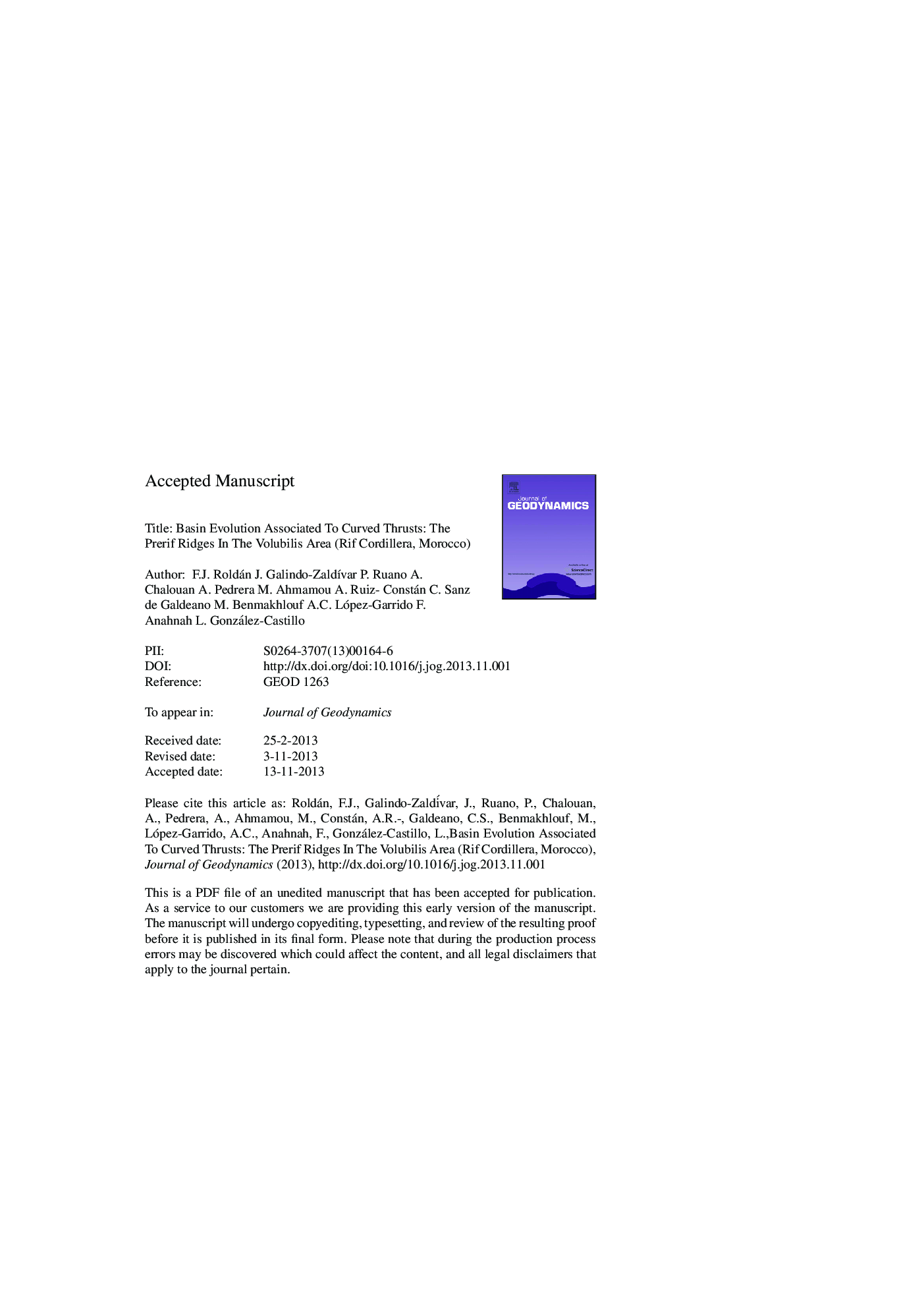| Article ID | Journal | Published Year | Pages | File Type |
|---|---|---|---|---|
| 4688110 | Journal of Geodynamics | 2014 | 29 Pages |
Abstract
The Volubilis Basin is located between two structural arcs formed by the Prerif Ridges that developed during and after sedimentation. The arcs correspond with W- to WSW-verging anticline culminations, limited, to the north by a NE-SW strike-slip lateral ramp. Sedimentary infill took place during two stages of ridge formation and propagation. The first stage occurred in the Middle Miocene-early Tortonian and was determined by the deposition of the Nappe Prérifaine in the northern part of the basin, and continental and marine sediments over the Prerif Ridges. The second one, Late Miocene in age (Tortonian-Messinian), corresponds to the sedimentation of calcarenites and bioclastic limestones at the basin edges, with a lateral transition to white and blue marls toward the center of the basin. There is clear evidence of synsedimentary deformation, suggesting the interaction of sedimentation and tectonics. Geophysical data allow us to characterize the stratigraphic architecture of the Volubilis Basin and the geometry of the top of the Paleozoic basement. An approximately N-S Tortonian-Messinian asymmetric depocenter is located close to the front of the eastern arc. This research illustrates the nucleation, progressive thrust bending and segmentation, and the propagation of folds interacting with sedimentation. Thrust nucleation agrees with Paleozoic basement highs under the detachment surface. The progressive development of these tectonic structures conditioned the formation, segmentation and final continentalization of the Volubilis Basin, which can be considered as a piggy-back basin.
Related Topics
Physical Sciences and Engineering
Earth and Planetary Sciences
Earth-Surface Processes
Authors
F.J. Roldán, J. Galindo-ZaldÃvar, P. Ruano, A. Chalouan, A. Pedrera, M. Ahmamou, A. Ruiz-Constán, C. Sanz de Galdeano, M. Benmakhlouf, A.C. López-Garrido, F. Anahnah, L. González-Castillo,
